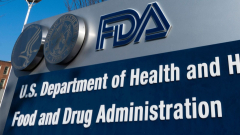About 1,500 federally funded health centers that serve millions of low-income people face significant financial challenges, their leaders say, as the government shutdown compounds other cuts to their revenue.
Some of these community health centers may have to cut medical and administrative staff or reduce services. Some could eventually close. The result, their advocates warn, may be added pressure on already crowded hospital emergency rooms.
“This is the worst time in all the years I have been working in health care,” said Jim Mangia, president and CEO of St. John’s Community Health, a network of 28 clinics that serves more than 144,000 patients in Los Angeles, Riverside, and San Bernardino counties in California. “We are facing federal cuts and extreme state cuts that will impact services.”
St. John’s and other federally qualified health centers offer primary care and a wide range of other services free of charge or on a sliding fee scale. Nationwide, they see nearly 34 million patients in the country’s most underserved areas.
The federal funds come through two primary routes, both of which face challenges: grants paid in part through the federal Community Health Center Fund and reimbursements for patients’ care through programs like Medicaid, which provides health insurance for low-income people and people with disabilities. Medicaid is jointly funded by states and the federal government.
Email Sign-Up
Subscribe to KFF Health News’ free Morning Briefing.
Congress has approved the grant money in dribs and drabs recently. In March, lawmakers extended the funds until Sept. 30. That money expired after the Republican-controlled Congress did not pass a funding law, leading to a government shutdown.
Advocates say the health centers need long-term funding to help them plan with more certainty, ideally through a multiyear fund.
The centers received $4.4 billion in grants in early 2024. The National Association of Community Health Centers is advocating for at least $5.8 billion in grants annually for two years to keep the centers fully functional.
The health center safety net faces “multiple layers of challenges,” said Vacheria Keys, vice president of policy and regulatory affairs for the association.
The new spending law that Republicans call the “One Big Beautiful Bill Act” will significantly cut Medicaid, raising the second set of threats for health centers.
Medicaid accounted for 43% of the $46.7 billion in health center revenue in 2023.
Advocates said lower Medicaid payments will exacerbate a gap between funding and operational costs.
Funding for workforce programs also is needed to support the delivery of health care services as centers struggle to hire and retain workers, said Feygele Jacobs, director of the Geiger Gibson Program in Community Health at George Washington University.
The first clinics of this type opened in places such as Massachusetts in the 1960s. Congress typically has funded them with bipartisan support, with minor fluctuations.
The struggle this year began when the Trump administration froze domestic aid through a January memo, which prevented some centers from receiving already approved grant money. As a consequenc





